Some of the links in this post may be affiliate links.
Although snake plants, or mother-in-law tongue as they are sometimes called, are tough plants, there are numerous questions and problems surrounding these plants. This post details 25 of the most common snake plant problems and questions that people ask.

Previously in the Sansevieria genus, snake plants are now classified in the Dracaena genus of plants.
Table of Contents
COMMON SNAKE PLANT PROBLEMS & QUESTIONS
SOIL, POTS, REPOTTING
1. What is the best soil for a snake plant?
Many different mixes can work as long as they are well drained. My personal preference for potting mixes for snake plants are 2-3 parts of a cactus/succulent mix with 1 part of 1/4″
The one I personally use and highly recommend is the 1/4″ pumice from Bonsai Jack’s. It’s very high quality and uniform and works really well!
Pumice is a volcanic rock that, when mixed into potting mixes, produces wonderful drainage for your snake plants.
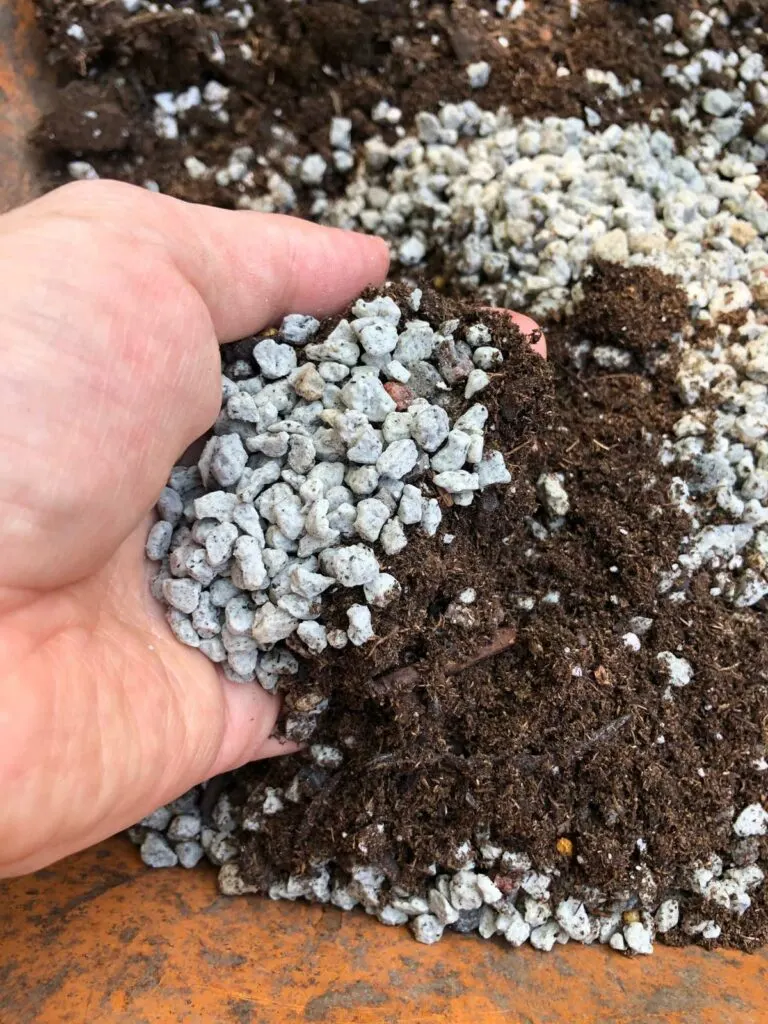
2. Best pot for snake plant?
You can use a variety of pots for snake plants, and I usually either grow them in terra cotta pots, or in plastic nursery pots which I then slip inside a more decorative pot.
Just keep in mind that terra cotta pots will dry out much more quickly, which can be both a pro or a con depending on your environment.
If your growing space is very warm and dry, you may want to avoid terra cotta pots since they can dry out excessively fast, especially the small ones.
3. Do snake plants need drainage holes?
Yes. This goes for any plant, but especially succulent plants like Sansevieria. The risk of rotting is too great if you don’t have a drainage hole.
4. When to repot snake plant?
My rule of thumb is the following, and this applies for any houseplant. The best time to repot is normally late winter/early spring when many plants are starting into growth again.
You CAN repot any time of year though if needed, especially if you provide good light (natural light or from grow lights) and growing conditions.
Snake plants do like to be root-bound and can stay in the same pot for many years. Eventually, they can even break or split the pot that they’re growing in.
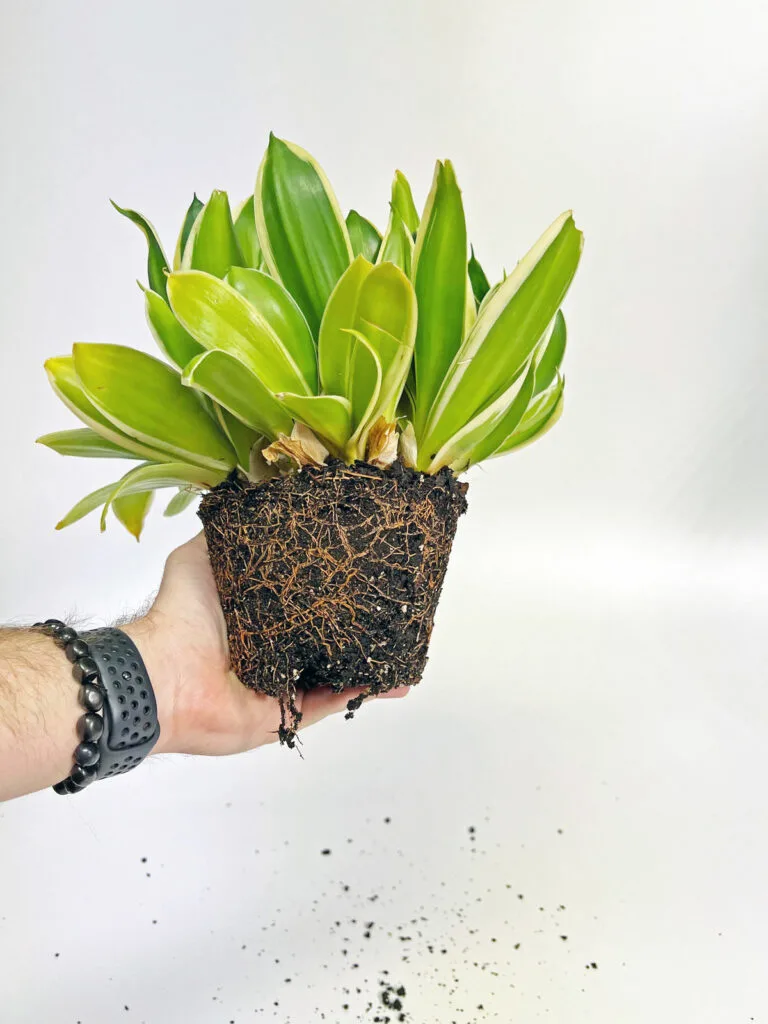
FERTILIZER
5. Does snake plant need fertilizer?
For best growth and health, fertilizer is an important part of any houseplant care routine. You can get away with not fertilizing, but eventually it will catch up to your plant.
Snake plants don’t need tons of fertilizer, since they grow naturally in areas with poor, rocky soil in tropical Africa, but you will have a healthier plant if you do.
6. Best fertilizer for snake plant?
You can use any all-purpose fertilizer for houseplants, especially those formulated for succulents.
Avoid any fertilizers that are very high in Nitrogen as this can result in weak, floppy new growth.
7. Can I use miracle gro on snake plant?
Do not use the standard all-purpose Miracle Gro since it contains excessive amounts of nitrogen. It has an NPK of 24-8-16. The first number indicates the nitrogen amount. Too much nitrogen can cause weaker, less sturdy new growth in your snake plants and in any other succulent plants.
Miracle Gro does make a Succulent Plant Food, which is appropriate for snake plants. The NPK for this product is 0.5-1-1.
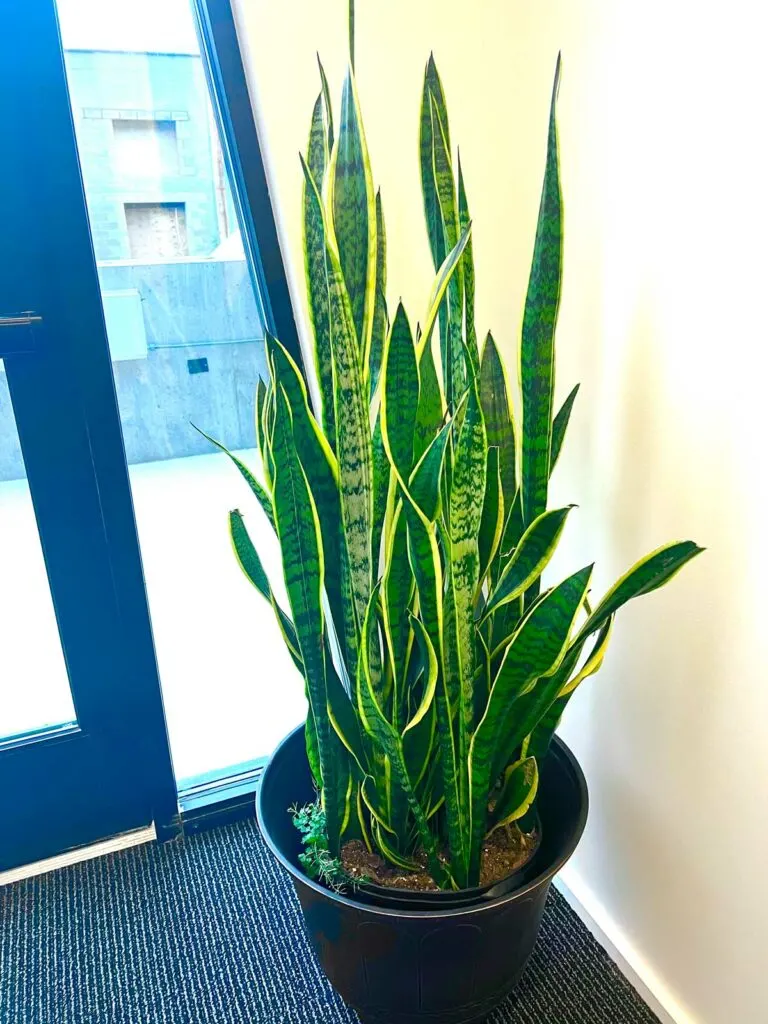
WATERING
8. How often to water snake plant?
You should not water based off of frequency, but rather, when your plant needs it.
Snake plants like their potting mix to dry out completely, but don’t wait too long otherwise even your snake plants can suffer.
When you’ve determined that your potting mix has completely dried out, go ahead and water.
Water thoroughly and allow all excess water to escape the drainage hole.
9. How much water to give a snake plant?
It is not necessary to measure out the water amount when you are watering your plant. There are a number of watering myths concerning “overwatering.”
Simply water until you’ve thoroughly moistened your potting mix, allow all excess water to drain away, and you’re done.
HUMIDITY
10. Do snake plants like humidity?
No special attention to humidity is needed for these plants.
LIGHT
11. How much light does a snake plant need?
These are often touted as low-light plants, but growth will be very poor in dim light. And it will take a long time, but these plants will eventually weaken dramatically in poor light.
They are slow to respond to poor light, but eventually the beautiful form of the plant will be distorted and leaves will weaken and bend.
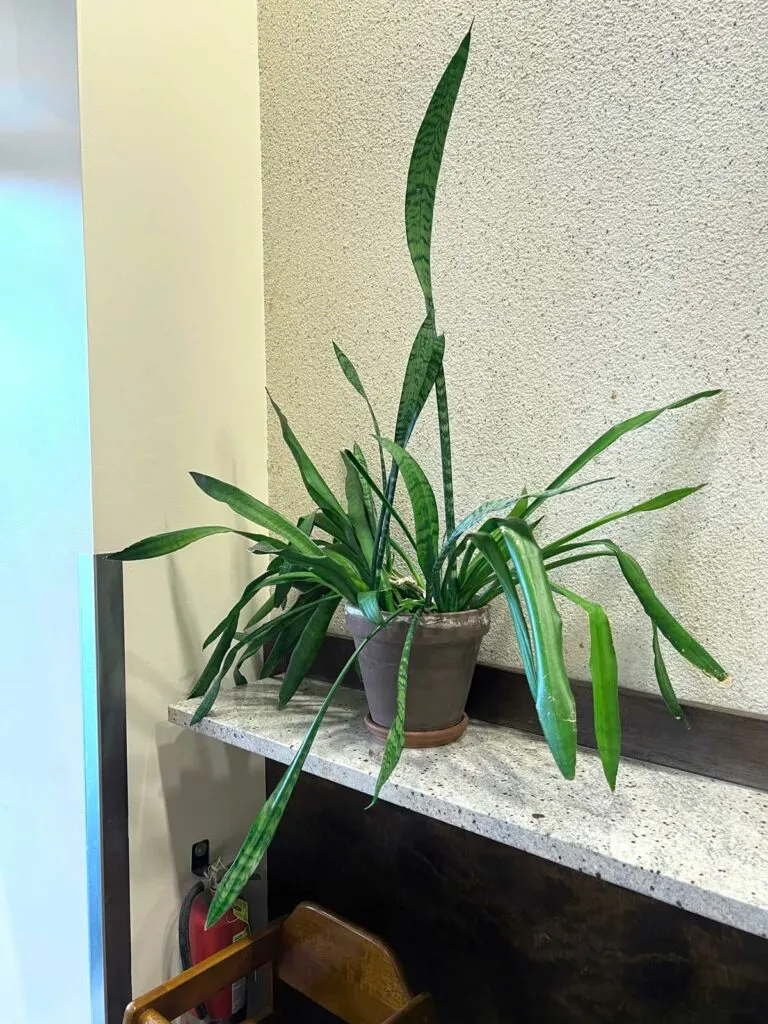
For best results, grow these plants directly in front of a window that has at least 2-3 hours of direct sunlight.
They can certainly grow in front of windows with no direct sun, but their growth will be much slower and they grow slowly to begin with.
Growing snake plants in dim conditions can also cause other issues. Namely, your potting mix can take too long to dry out and thus increase the risk of root rot.
PROPAGATION
12. How do you propagate mother in law tongue?
Propagation can be done by division, leaf cuttings in water or soil, rhizome cuttings, or by seed. Refer to my snake plant propagation post containing all the details for each of these methods, with step-by-step photos.
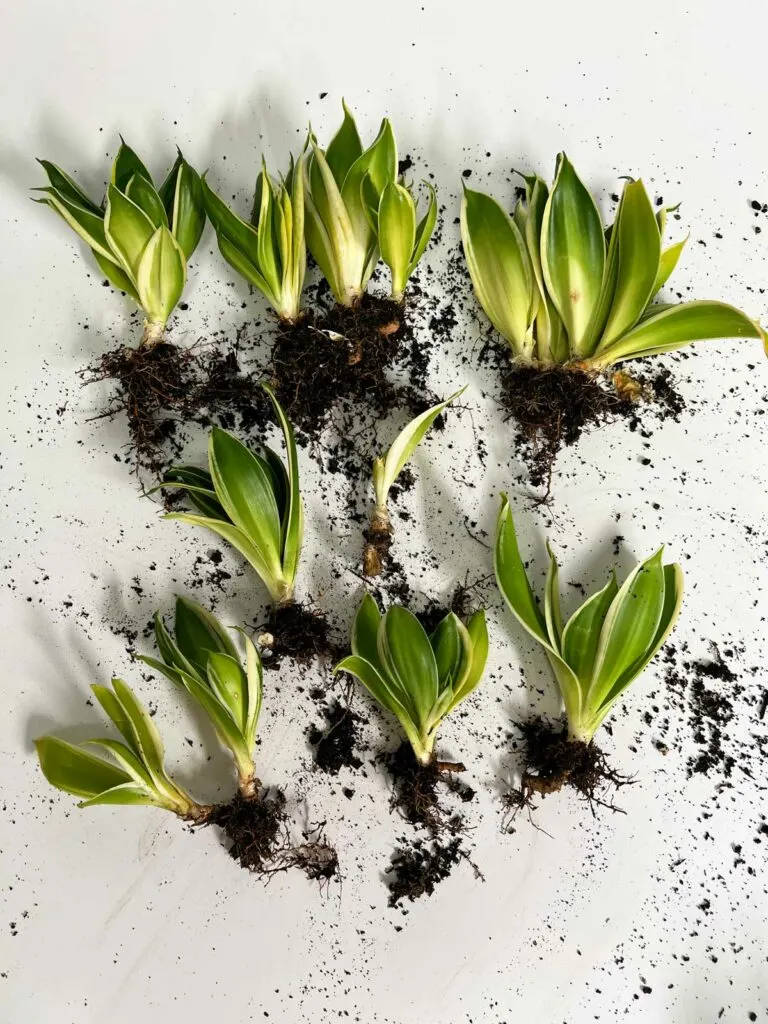
PROBLEMS
13. Why are my snake plant leaves curling?
Typically, leaf curling in Sansevieria is caused by the potting mix going completely dry for too long. As with any problem, you’ll need to observe your plants to verify, and in this case, go ahead and check the soil moisture when you notice leaf curling.
Feel your soil with your finger (moisture meters can be notoriously unreliable and I do not recommend them). Has your soil stayed dry for too long?
Snake plants can easily take completely dry soil, but it doesn’t mean that they will stay in prime shape if you keep them dry for extended periods.
Be sure to soak your plant well if it has gone dry for too long.
14. Why are the leaves on my snake plant drooping?
Drooping leaves can be caused by what I mentioned in the previous section where I discussed curling (dry soil for too long).
15. Why does my snake plant have mushy leaves?
The most common reasons for mushy leaves are the following:
- Was your plant exposed to cold temperatures? Maybe you left it outside when it was cold, or perhaps you ordered a plant and it was shipped to you during cold winter months. If temperatures are cold enough, the succulent leaves of snake plants can pretty quickly turn to mush.
- Has your potting mix remained wet for too long? Has your plant been sitting in water perhaps in the saucer underneath or in its decorative cache pot?
Cold temperatures AND wet conditions combined together is an especially dangerous combination and you can quickly kill a snake plant that way.
16. Why are my snake plant roots brown and mushy?
If your snake plant’s soil stays too wet for too long, these plants can easily get root rot. Never allow your plant to stay wet for too long.
Always discard excess water that accumulates in the saucer below. Or if you have your plant growing in a pot that has drainage holes, and is slipped in a decorative cache pot without drainage holes, be careful of any accumulation of water in the pot.
If your roots have gotten brown and mushy, you will likely also see droopy leaves, as well as yellow leaves in combination.
If you do notice this, clean up any mushy roots and rhizomes, trim away any yellow leaves, and repot into small pot in a well draining mix. I recommend 2 parts of a good succulent/cactus mix plus one part
Having a smaller pot size, well-draining potting mix, and good light will make it difficult to achieve root again.

17. Why is my plant not growing?
Quite simply, your plant is probably not getting enough light. Growth will slow down or even come to a complete halt if you are not providing enough light for your plant.
Indoors, for best growth, snake plants would greatly benefit from at least some direct sun right in front of a window. Eastern or Western exposure windows would be ideal, especially if they are unobstructed.
Just keep in mind that the more light your plant receives, the quicker the soil will dry out so be flexible with your watering routine.
Although snake plants can tolerate low light conditions, they will suffer over time.
They can be slow to respond to change so if you have a plant in a dark corner, it will likely remain looking good for quite a while, but eventually the poor conditions will take its toll and the plant will suffer with weak floppy leaves and poor growth.
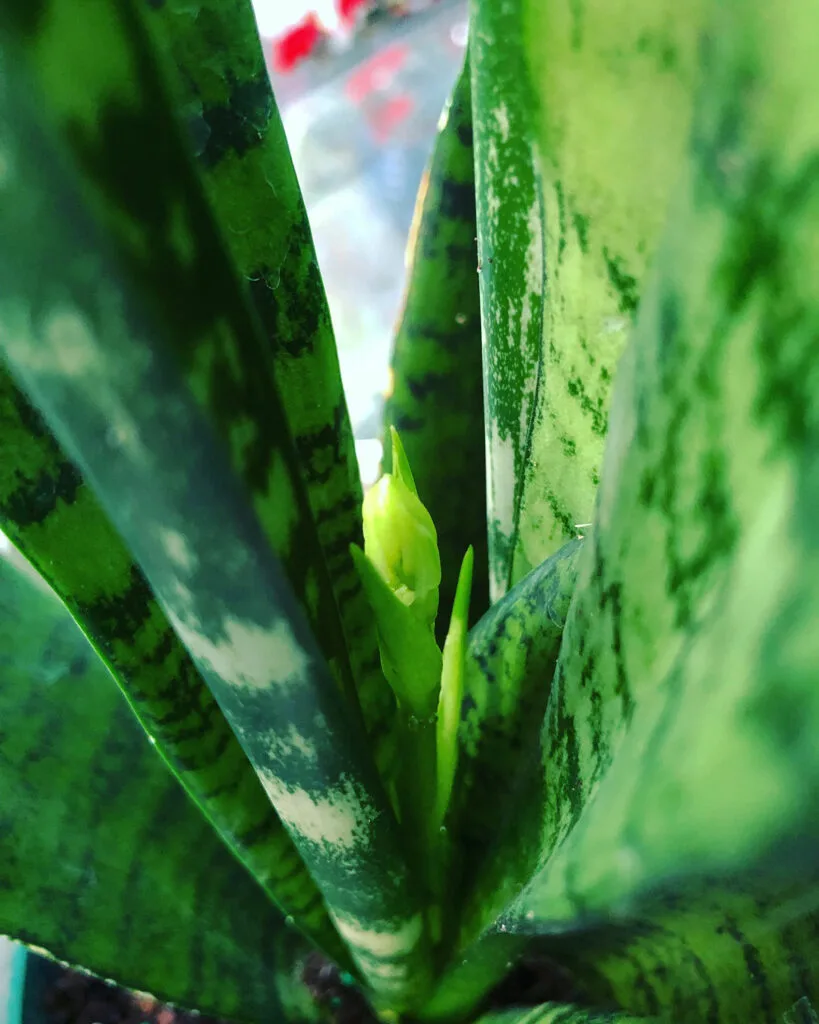
OTHER
18. Can snake plants be outside?
Yes of course they can be outside, as long as the temperatures are adequate. Remember that there is no such thing as a “houseplant”. All plants evolved outdoors.
If you choose to move your Sansevieria plants outside, make sure that you keep them in conditions that are no colder than 55F minimum (approximately 13C).
Most Sansevieria plants are native to Africa and are tropical plants that enjoy warmer conditions. Strive to keep your plants in the 65-80F range (approximately 18-27C).
Another thing to be careful of is when you move plants from indoors to outdoors. Always place a plant in complete shade outdoors at first, even for sun-loving plants, otherwise they will quickly burn.
The light outdoors is much stronger than indoors, so your plant needs to acclimate slowly. After a period of 1-2 weeks or so of being in the shade, gradually increase any sun as needed, if you wish. Snake plants can take some sun even outdoors.
I’ve witnessed many snake plants growing outdoors in quite a bit of sun, including on a trip to Africa.
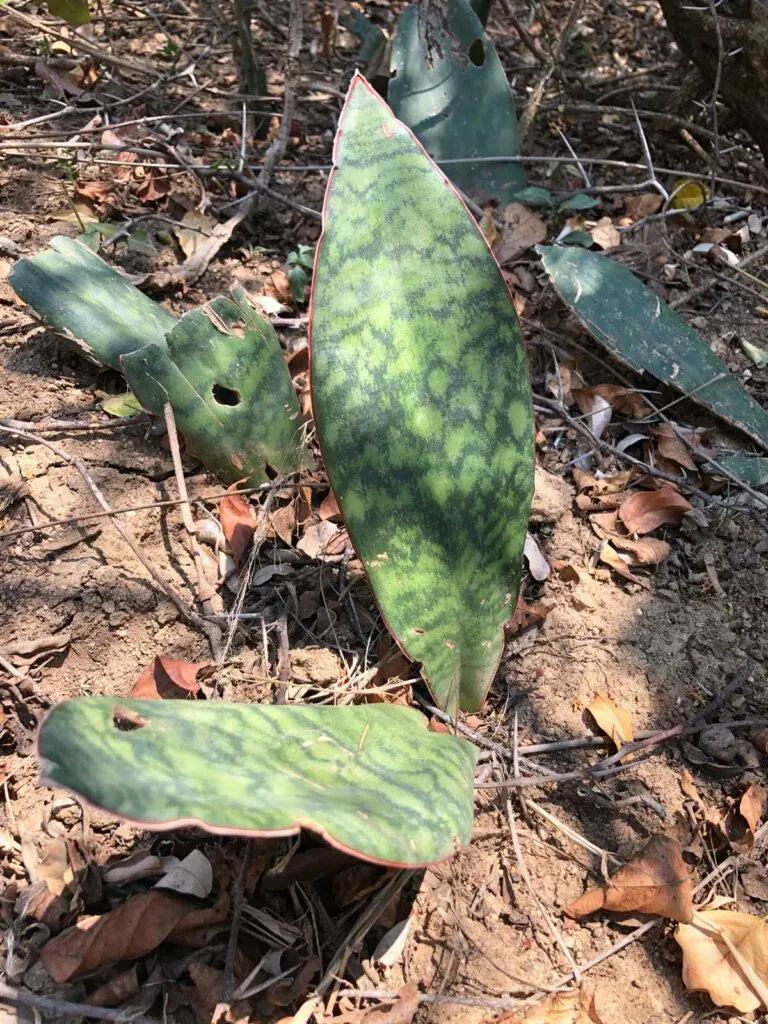
19. Can you plant snake plant with other plants?
You absolutely can, but the one thing to keep in mind is to make sure that whatever plant you pair with your snake plants share the same light and soil moisture preferences.
Many succulents would pair well with a snake plant!
20. How to care for snake plant in winter?
Winter time for snake plants, and any houseplant for that matter, can be more challenging. The key is to adapt your care routine because conditions in the wintertime (depending on where you live and if you use grow lights or not), can be dramatically different.
Cooler temperatures, cold drafts and substantially reduced light will slow down growth, shock the plant, and cause the potting mix to take much longer to dry out.
Cold and wet conditions will spell death for snake plants and encourage rotting.
I do not recommend watering on a schedule. Checking your plants on a schedule is invaluable, but if you continue to water your plants, particularly snake plants or succulents, on a set schedule like some people do, you could run into problems!
Check your potting mix moisture and do not water your snake plants until the soil has completely dried out (and this goes especially for winter time).
Be sure not to miss my detailed blog post on plant care in winter. There are lots of tips and topics to be aware of so that your plants can really thrive during the challenging winter season.
21. What are some other names for snake plants?
These plants belonged to the Sansevieria genus, but have been reclassified into the Dracaena genus.
Among the common names for these plants are: snake plant, mother-in-law’s tongue, viper’s bowstring hemp, Saint George’s sword, devil’s tongue, and more.
22. What are good snake plant varieties?
There are quite a few gorgeous varieties to grow in the home, and many of them are cultivars of the Dracaena trifasciata species.
Be sure not to miss my blog post on 13 beautiful varieties of snake plants. They’re among my favorites!
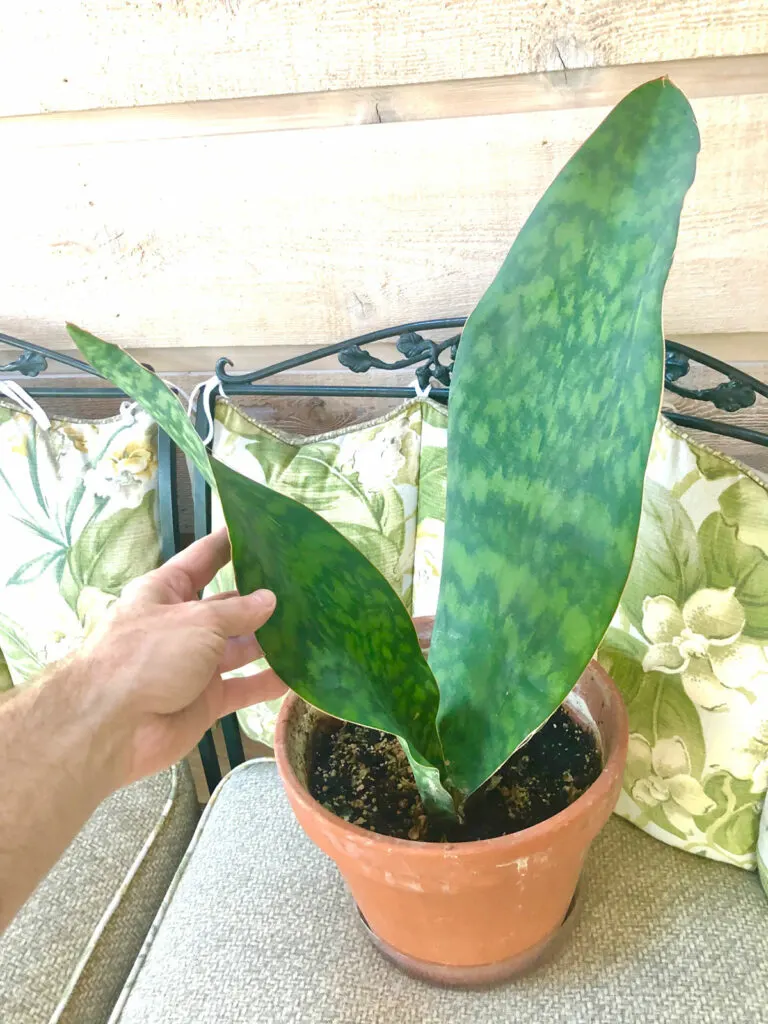
23. Are snake plants succulents?
Snake plants are considered succulents. Remember that succulent just means that the plant can store water which allows them to survive periods of drought.
There are certainly plants that are more “succulent” than snake plants, but they are still considered to be succulent.
24. Is mother in law tongue poisonous?
Yes, snake plants are toxic to dogs and cats, due to saponin compounds, according to the ASPCA.
If you pet ingests these plants, it can cause nausea, vomiting and diarrhea.
25. Do snake plants like to be misted?
It is not necessary at all. In fact, it may even be detrimental! Read my blog post on why misting your snake plants can be bad.
26. Why is my snake plant not growing straight?
There are numerous reasons why your plant may not be growing straight up. The reasons can include poor cultural conditions. Refer to my blog post where I’ve detailed 5 reasons why snake plants don’t grow straight for more details.
RELATED RESOURCES
Other than the posts I wrote that I already linked to, here are other posts that might interest you:
I hope you’ve enjoyed this post! Do you have any other snake plant problems that are not mentioned in this post? Comment below and I will help.

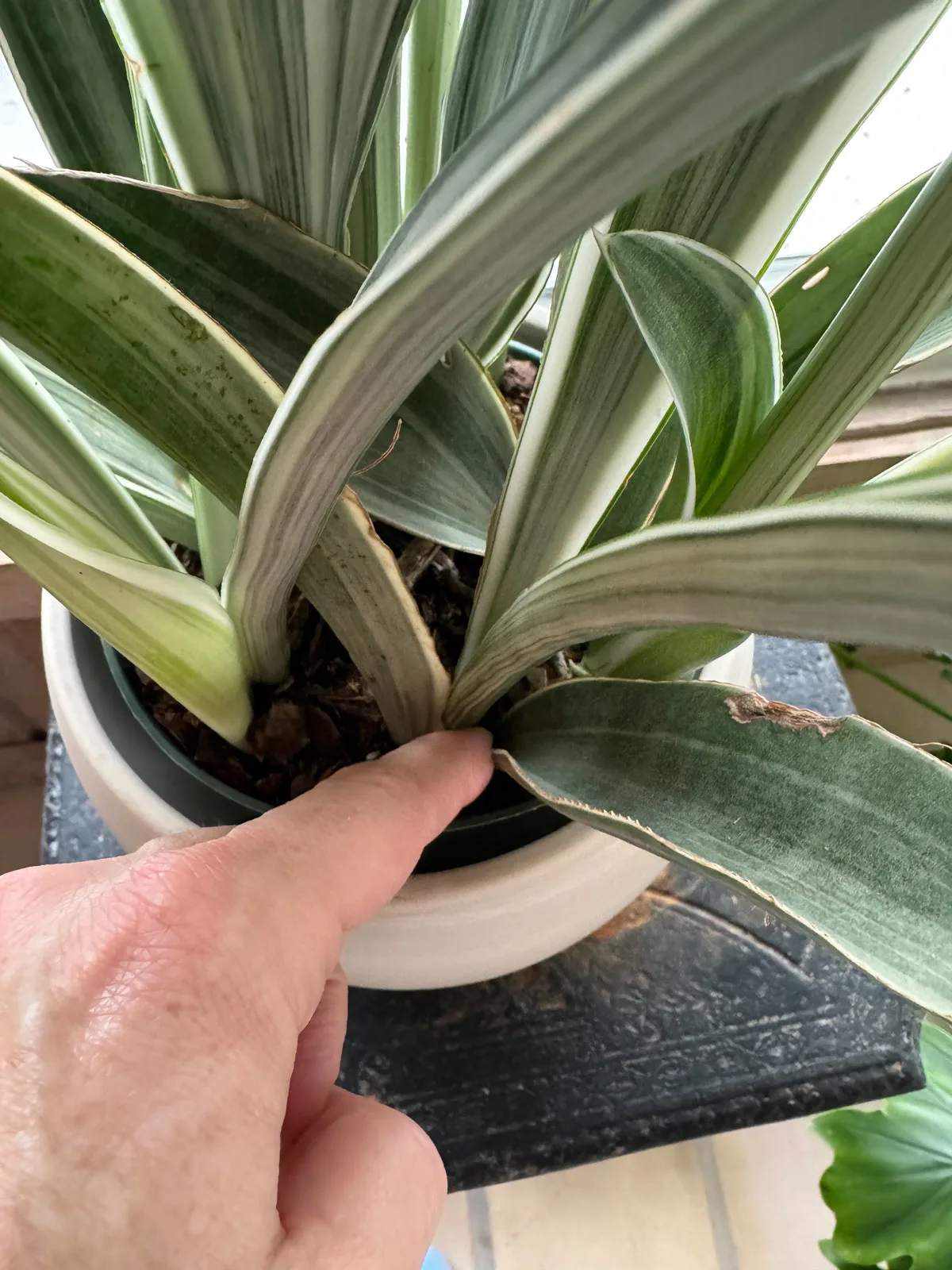
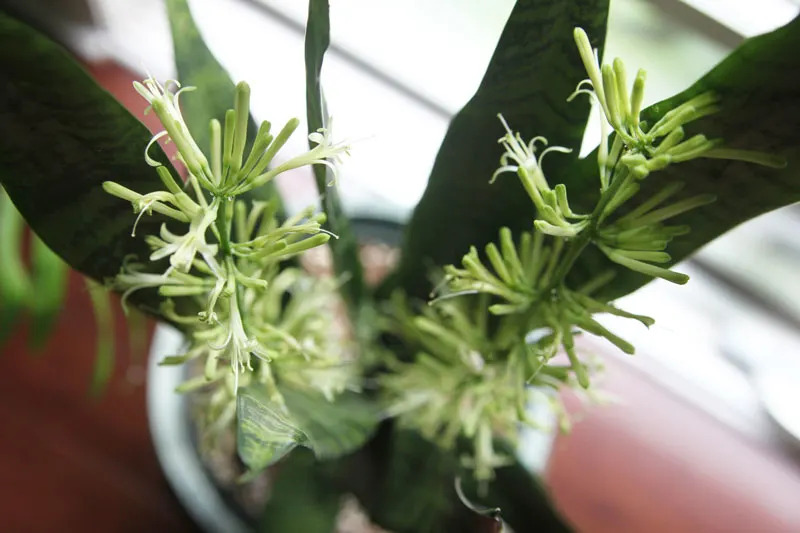
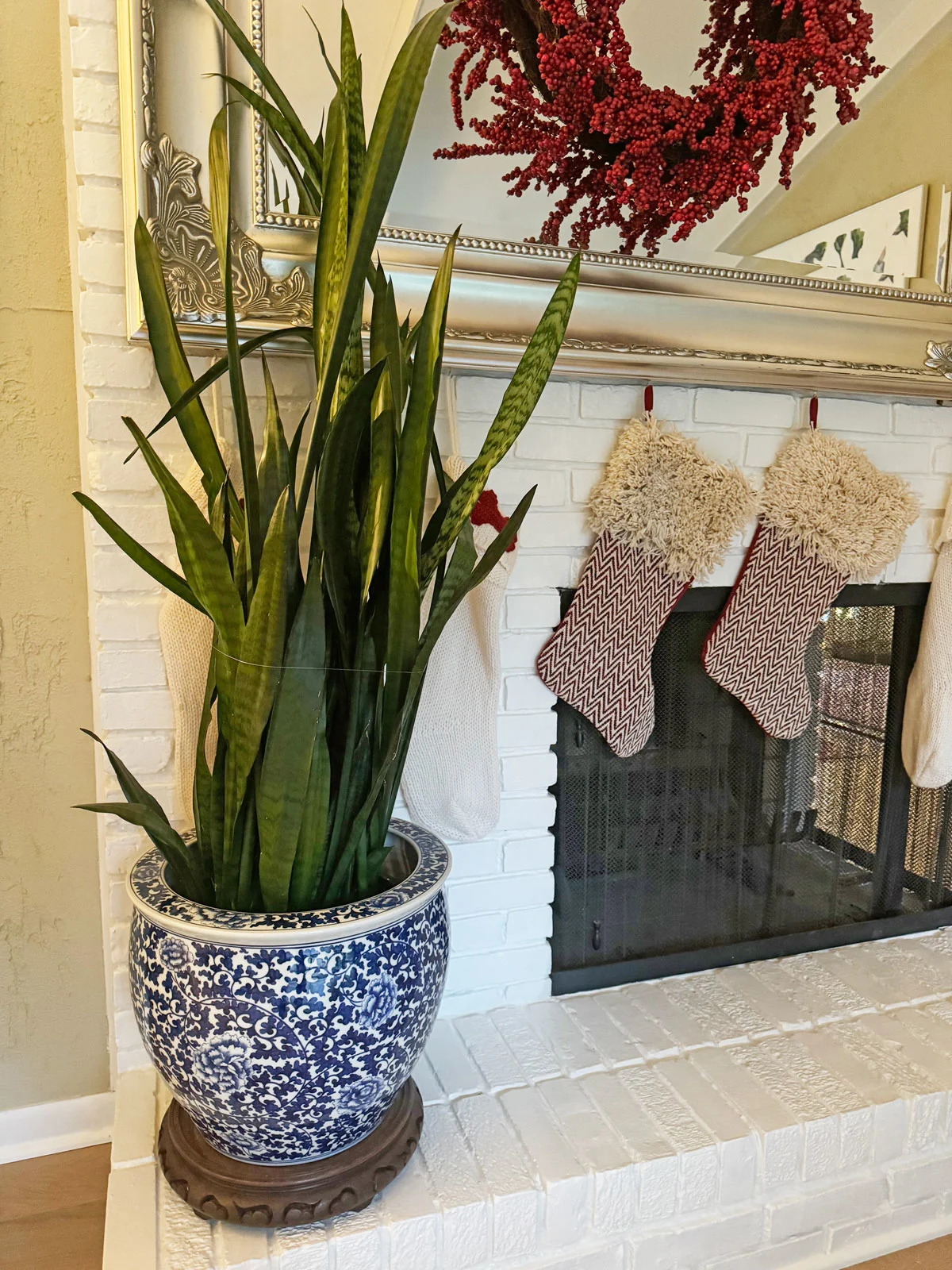
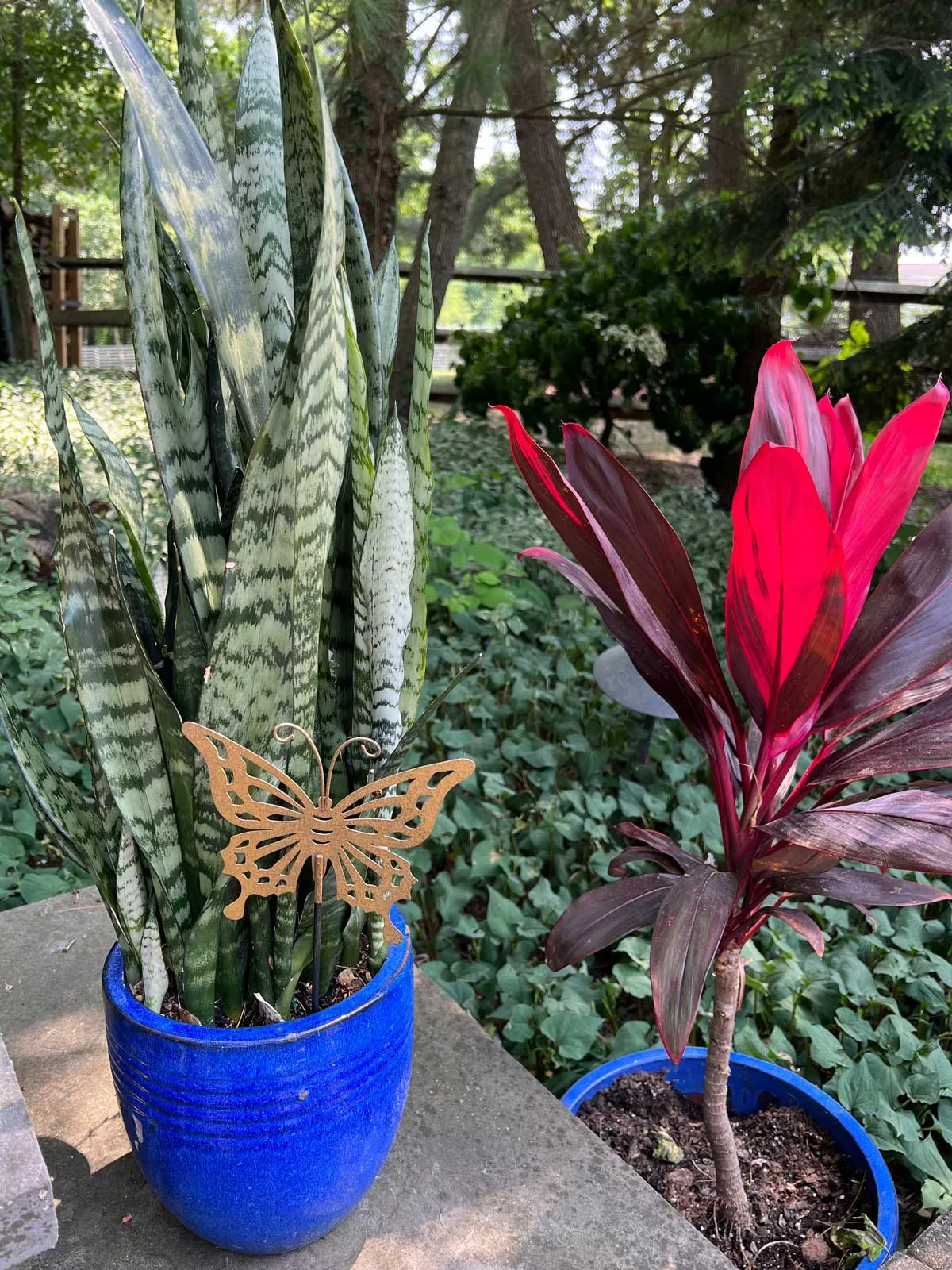
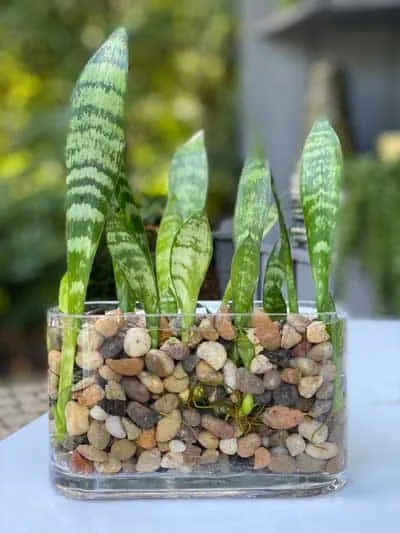
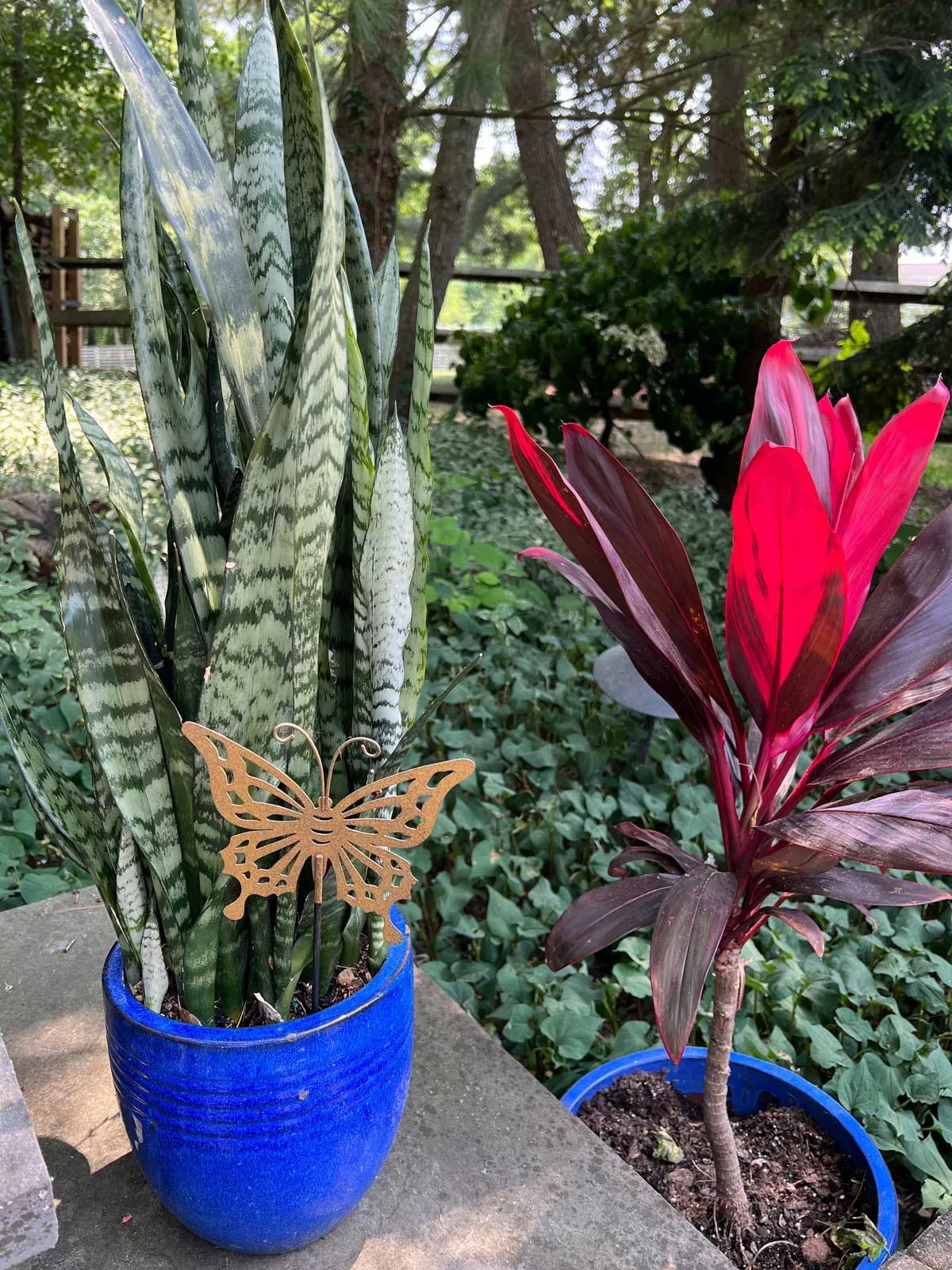
Allison Dobbs
Wednesday 26th of June 2024
I am new to snake plants, and I introduce several into my house without realizing that they had fungus gnats, which have now spread to my orchid and other plants. Do you have any tips on how to get rid of these little buggers?
Allison Dobbs
Sunday 30th of June 2024
@Raffaele Di Lallo, thank you so much! I found you on Instagram for your orchid advice, and I looked through your blog posts, but must have missed the one about fungal gnats! I ordered everything tonight. I appreciate all your sage advice. Thanks again!
Raffaele Di Lallo
Friday 28th of June 2024
Hi Allison! Sorry to hear about the fungus gnats. I do have a blog post that describes how I recommend dealing with them. Here it is, and good luck! https://www.ohiotropics.com/2021/01/31/killing-fungus-gnats-houseplants/
Jill Gauthier
Wednesday 20th of September 2023
I have what looks like black dry tiny worms around my snake plant every day. Any idea what these could be?
Raffaele
Friday 22nd of September 2023
I'd have to see a photo to try and help. Are you on Instagram? You can DM me a photo (my account is @ohiotropics).
Lea Ann Wojta
Monday 5th of June 2023
My snake plant has droopy leaves. According to your information I don't have it in the correct light. If I correct the light will the leaves stiffen and get stong. Should I repot it Thank you in advance for your help Lea Ann Wojta
Raffaele
Monday 5th of June 2023
They may, but it will mainly affect the newer growth. As far as repotting, only if it is root bound.
Kristine Quick
Saturday 29th of April 2023
Hi, my snake plant looks very health and firmly fitted in the soil but the whole plant has moved to lean to one side, anymore and it will tip the pot. Do you have any advice for me. Could I take them out of the soil and re plant then straight. I’ve tried putting it on a window sill hoping the light might help but nothing. Hoping you can help.
Raffaele
Monday 1st of May 2023
Yes, you can definitely do that! Sometimes the rhizomes grow a lot and they actually start to push the plant out of its pot! That happened to me once.
Simone
Monday 24th of April 2023
What is cause breaking at soil level. Leaves are not drooping or bend and are still firm .
Simone
Monday 24th of April 2023
@Raffaele, plant is about 2 feet to side of patio door with west exposure Door has no window coverings about 80% of the time. Leaves fall over and break off from outside at soil level . Roots feel slightly spongy at dirt level but soil is dry . Leaves are green and firm even when they break off
Raffaele
Monday 24th of April 2023
Can you be a little more descriptive on what you mean by breaking at the soil level? Are they literally just falling over and snapping? What kind of light do you have your plants in? How far from a window and what exposure?